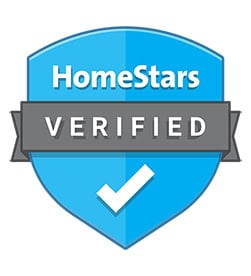You have reached Jen Llewellyn for the 12th edition of the 2010 OMAFRA Nursery and Landscape Report, updated on Friday, June 25th.
If you or someone you know would like to receive the report FREE online every week, please subscribe online at: http://apps.omafra.gov.on.ca/scripts/english/crops/agriphone/addremove.asp
Environment Canada is calling for sun and cloud today with highs around 22-25oC today and very clear tonight (excellent for star-gazing). We’ve got showers and possible thunderstorms starting Saturday afternoon or evening that could last into Sunday (again). Daytime highs are expected to be 22-25oC in most areas. Winds will be 10-15 km/hr and out of the NW today, switching to the W on Saturday. We are expecting the sun to shine again…just about the time you report for work on Monday morning.
Growing Degree Days are to the end of Thursday, June 24 (GDD 10oC / GDD 50oF). These numbers are only a guide for monitoring purposes. The temperatures at your production facility can vary significantly from the nearest weather station. Check out: https://climate.weather.gc.ca/?url=http%3A%2F%2Fclimate.weather.gc.ca
| Peterborough: 374 / 673 | Hamilton RBG: 450 / 810 | |
| Vineland Stn: 443 / 797 | London CS: 423 / 761 | Windsor: 565 / 1017 |
Plastic pot, tag and tray recycling next week!
Bring your plastic pots, tags and trays to Landscape Ontario office in Milton (5th Line South of Steeles) for recycling, from June 28 to July 5. For more information, contact Lorraine Ivanoff at 1-800-265-5656, ext. 236, or email lorraine@landscapeontario.com.
Growers’ Research Auction, July 15
Landscape Ontario Grower Group is auctioning off nursery stock and horticultural hard godos at the Milton office (7856 Fifth Line South, below Steele’s Ave). Come out to purchase award-winning plant material and support research and development for the nursery industry.
Weed ID Online: http://www.weedinfo.ca/home.php
PLEASE NOTE: Pesticide Recommendations are meant for Exception Uses (e.g. agriculture) under the Cosmetic Pesticide Ban unless the active ingredient is listed under Class 11 pesticides in Ontario Regulation 63/09, effective April 22, 2009. There is exception from the ban for the use of pesticides to maintain the health of TREES, if certain conditions are met. For more info, you can go to the Ministry of the Environment’s website at http://www.ontario.ca/pesticides
VARIOUS ORNAMENTALS:
Monitor for common leaf diseases such as leaf spot and anthracnose on herbaceous perennials and deciduous shrubs (Rosa, Prunus, Cornus). These leaf diseases are more prevalent under late-day irrigating since the leaf wetness period is more prolonged, encouraging disease sporulation and infection. Keep disease-prone ornamentals on a strict, mid-morning watering schedule to reduce leaf wetness periods and you will notice that the next flush of growth is much nicer. There are several different fungicides labelled for foliar diseases, including Rhapsody (a biological).
Are you seeing strange growths on the leaves of deciduous trees and shrubs? There are several different kinds of leaf galls on ornamental woody plants and the vast majority are completely benign in terms of plant health. I’ve had lots of questions about strange bumps (white, pink, red, green) on oak, ash maple leaves and velvety fuzz (red to orange) on various plants (including maple). Many of these leaf galls are inhabited by immature, tiny wasps, mites and midges. Take a good look at the leaf, if the tissue is still green and its attached to the tree, chances are the gall-forming insect isn’t detrimental to the tree. An exception to this rule are some oak twig galls (gouty, horned), which cause twig dieback.
Check for adults of black vine weevil and strawberry root weevil on crops such as Picea, Rhododendron, Taxus, Thuja and Euonymus in field and container (woody and herbaceous) production nurseries and the landscape (where Catalpa speciosa are blooming). BVW are about 1.5 cm long, black, with mottled brown flecks on their backs. SRW are about 0.8 cm long, reddish brown. Adult weevils can be found hiding deep in foliage or just under leaf litter during the day. In nursery production, Pounce and Thiodan are registered to manage the adult stages of weevils. Applications of beneficial nematodes are no longer effective at this time. The next window for nematodes to target the next generation larvae in soil will be late summer.
White grubs are pupating and species of European chafer adults have are starting to emerge. A preventative application of Intercept (imidacloprid) is registered for white grubs in nursery production. In the field, the application period is June to July (to coincide with egg-laying). Nematode applications for white grubs (e.g. European chafer) are not effective at this time. Try timing nematode applications for late August/early September to catch early instar larvae.
Japanese beetle adults are just starting to emerge (where the Tilia cordata are blooming). Look for large, coppery-green metallic beetles (13mm long) with distinctive white tufts of hairs around the sides of their abdomen. They are very attracted to floral lures and Japanese beetle sex pheromones and can be easily trapped (always use traps as far away from your production blocks as possible) for manual disposal. The adults will feed on the flowers (Rosa) and foliage (Tilia) of many woody and herbaceous plants. They lay their eggs in grassy areas and the larval stage feeds on the roots of turf. If adult populations become economically threatening, applications of Sevin, Malathion or Imidan may be warranted. To help qualify for the Japanese beetle certification program, an application of Intercept on container stock should be made some time between June and July. The cut-off period for Intercept applications to comply with the JB Certification program this year may be as early as July 31st.
DECIDUOUS WOODY AND HERBACEOUS PERENNIALS:
Monitor for downy mildew on herbaceous perennials and deciduous shrubs (Rosa, Prunus, Cornus). Downy mildew is rearing it’s ugly head on field crops around southern Ontario and the Great Lake States so be on the lookout for purplish-red to brown lesions with a downy mass of spores on lesion undersides just after irrigation. These leaf diseases are more prevalent under late-day irrigating since the leaf wetness period is more prolonged, encouraging disease sporulation and infection. Keep disease-prone ornamentals on a strict, mid-morning watering schedule to reduce leaf wetness periods. Acrobat fungicide was recently registered to help combat down mildew on ornamentals. Reducing leaf wetness periods will also go a long way. Bacterial leaf spot may be evident on deciduous shrubs and herbaceous perennials. Bacterial leaf spot looks purplish red spots that are often delineated by leaf veins. It looks a lot like downy mildew but there is no fuzzy growth (sporulation) on lower leaf surface when you hold it is a moist baggie. Bacterial diseases may be suppressed with copper fungicides and reduced leaf wetness periods.
We saw black spot on rose this week in the landscape. The disease looks like dark lesions with fuzzy edges and quite often causes infected foliage to turn yellow and premature leaf drop. Black spot can also cause a purplish cane blight. The disease is most common on older rose cultivars that are under overhead irrigation. Rogue out severely affected plants in the nursery. Where disease pressure is still low in the nursery, some protection may be achieved with the use of Banner Maxx, Daconil, Nova, Senator etc.
Pear trellis rust (Gymnosporangium fuscum) is starting to become evident on pear trees this year in the landscape. Look for small, bright orange lesions on the tops of pear leaves. It is too late to do anything about this disease, leaves were infected during warm, wet conditions in May (from infected Juniperus sabinae, the overwintering host). Lesions are very unsightly and sometimes lead to premature leaf drop. Lesions will produce crème coloured structures on leaf undersides in late summer and send spores to the alternate Juniper host. Once the pear leaves drop, the tree is no longer infected. Annual infection of pear depends on the alternate host, Juniper, sporulating nearby in the spring. Keep trees healthy and where possible, protect with fungicides during sporulation period of Juniper host in mid-spring. http://www.omafra.gov.on.ca/english/crops/hort/news/hortmatt/2007/23hrt07a2.htm
Where the second flush of growth is emerging in container grown Euonymus fortunei, Euonymus anthracnose may be sporulating and infecting the new growth. Ensure good fungicide coverage before warm, humid nights. Daconil is registered for this disease. Anthracnose appears as a leaf spot (usually late summer) and stem canker and can be quite serious on variegated cultivars of Euonymus fortunei.
Powdery mildew is an issue on highly susceptible ornamentals (Amelanchier, Rosa, Syringa) right now. Monitor for powdery, white residue on the tops of leaves as a symptom of this disease. Powdery mildew can lead to chlorotic, stunted foliage that may drop prematurely. Sulphur and copper are exempt for use as fungicides in the landscape. In the nursery, effective fungicides include Banner MAXX, Compass, Nova, MilStop, Rhapsody (B. subtilis) etc.
We have seen quite a few trees showing symptoms of Dutch Elm Disease this spring. Injections for Dutch Trig should be finished by now as this product is most effective before leaves are fully expanded. Arbotect-20-S (thiabendazole) is no longer being marketed in Canada.
Leafhoppers: nymphs and adults are feeding on crops. Monitor for leafhoppers (such as potato leafhopper) on nursery crops such as Caragana, and Acer, especially after forage crops have been cut on neighbouring farms. Leafhopper adults are winged, are very mobile, tiny, pale yellow-green jumping insects that are easily disturbed when you approach infested foliage. It almost looks as though they are being flicked off of the foliage. Adults blow in from the south and will feed and lay their eggs on newly expanding leaf tissue. Leafhopper nymphs are tiny, flightless, yellow-green insects that move sideways, very rapidly across the leaf. Leafhoppers suck plant sap from expanding foliage and cause foliage to wilt, become off-coloured and eventually curl and become stunted with brown-black margins (“hopper burn”). Leafhopper injury also appears as bronzing or stippling on more mature leaves. Monitor populations and treat with insecticides before damage becomes economically threatening. Leafhoppers are also attracted to yellow sticky cards, for monitoring. Registered insecticides include Tristar and Sevin XLR.
I know it’s early but Fall webworm nests may be starting to form on trees. I’ve seen them in early summer on Betula before, they are also common on Fraxinus (ash) and Juglans (esp. black walnut). Look for webbed tents on the ends of branches with fuzzy, crème-coloured caterpillars inside. The tents can be easily pruned out and destroyed (e.g. squished). Pruning out infested branches can be quite effective right now since there are multiple generations of this pest. Chemical pesticides may give some reduction in webworm populations but it is very difficult to get past that web. Keep in mind that many predators, parasites and pathogens attack fall webworm. Damage from the fall webworm is usually insignificant to tree health, late in the season. Telescoping pruners can be an excellent tool for IPM in the landscape.
The first generation of Euonymus scale crawlers are settling as nymphs. Euonymus scale look like tiny white flecks (males) and brown (females) flecks along twigs and the undersides of leaves. Look for bright, orange crawlers around populations of adults and on the undersides of leaves and twigs. Where insecticide applications are warranted, multiple applications may be required to get good knockdown since crawler emergence is staggered over a few weeks. For a low toxicity alternative, try insecticidal soap and the summer rate of horticultural oil.
Oystershell scale crawlers are still quite active and mobile. The crawlers are yellow-brown and will be looking to settle upon new feeding sites over the next few weeks. Adult scales look like miniature sea shells, often twisted to one side and there can be several generations of dead adults caked onto stems and branches. They are small scale insects, about 3mm long when mature. They feed on the twigs of Fraxinus, Acer, Quercus, Malus, Syringa and Tilia. Crawlers begin to hatch when the Philadelphus begins to bloom and the Syringa patula ‘Miss Kim’ are in full bloom. Treat crawlers at PEAK egg hatch, about 7-10 days after crawlers start to hatch. Repeat applications 2-3 times since crawler hatch is staggered. For a low toxicity alternative, try the summer rate Landscape Oil and insecticidal soap.
Woolly beech aphid can be found feeding on European beech (Fagus sylvatica) leaves. The aphids overwinter as eggs, hatch at bud bread and give birth to live young as leaves have expanded. They secrete a white, waxy substance that covers their body and makes it appear “woolly”. Insecticidal soap or a strong stream of water can help reduce numbers of woolly aphids before they coat the undersides of the leaves. Infestation does not reduce host vigour, but honeydew production attracts other insects (ants, bees, wasps) and sooty mould.
Elm sawfly larvae and Elm flea weevil larvae are making leafminer tunnels on foliage of Siberian elm. Each year, elm leafminer causes significant injury (brown blotches between veins) to elm, especially non-native species. Elm flea weevil feed inside leaves causes significant leaf blotching along leaf margins. Early adult feeding causes small, discrete holes in the leaves (still visible). If you are seeing this pest, please let me know.
Emerald ash borer adults are active in south western Ontario. TreeAzin (azadirachtin, neem) has an emergency use registration (until August 31) for emerald ash borer on ash. This is an injectable insecticide that is delivered though BioForest’s Ecoject system, to inject insecticides to help protect ash trees from this borer. For more information contact BioForest (http://www.bioforest.ca/).
The regulated areas for Emerald Ash Borer have been updated. Check out: http://www.inspection.gc.ca/english/plaveg/pestrava/agrpla/survenqe.shtml
Honeylocust plant bugs can be found feeding on new foliage (nymphs are 3-4 mm long, green, fast crawling plant bugs). These plant bugs have really caused a lot of injury on mature honeylocusts in Wellington County this year. This was a significant pest in the last couple of years, treat where there is a history of damage and a high population, where appropriate. There are multiple generations throughout the growing season. We are also seeing honeylocust leafhopper feeding on honeylocust trees now.
Peach tree borer (Synanthedon exitosa) adults are flying in container and field production. Look for cankered regions and chewed bark/wood in the lower stems of Prunus x cistena (and other Prunus spp.) as a sign of larval damage. The clearwing moths that emerge resemble wasps. Adults are very much attracted to sticky wing traps that are baited with peach tree borer pheromones. Place pheromone traps out in early-mid June (approximately 390 GDD Base 10oC, ‘Red Prince’ Weigela in full bloom) and monitor for peak flight of adults. You can expect peak egg hatch around 10-14 days later, if you are thinking of treating newly-hatched larvae. The same ‘clearwing moth’ pheromones and traps can be used to monitor for Viburnum borer. Viburnum borer chews the stem (at and below the soil line) and causes significant injury to container grown Viburnum. Viburnum borer will be starting to emerge in container production at this time. To purchase traps, try ordering from IPM suppliers such as www.greatlakesipm.com and www.naturalinsectcontrol.com.
Gypsy moth larvae are about 3-4 cm long, dark, very hairy caterpillars with a yellow-black head. The pairs of red and blue dots on their back is very noticeable. We haven’t seen many gypsy moth larvae this year, much of the larvae were killed by naturally-occurring diseases in June, 2009. We often find gypsy moth larvae feeding on Quercus, Corylus, Tilia etc. They hide within bark cracks on the trunks of trees and undersides of branches during the day. It’s too late for Dipel (B.t.). Success (spinosad) insecticide is a low toxicity choice that is effective during all instars. Pounce (permethrin) also has some good efficacy against the larval stage and is a low toxicity choice. Some keen homeowners can install a burlap skirt at the base of the tree to create a shady, protected area for larvae to hide during the day. Homeowners will need to inspect burlap skirts and underlying bark crevices daily (1-3 pm is best) and remove/destroy larvae. Sticky bands around trunks in early summer will help intercept flightless adult females and prevent them from laying eggs in the canopy above (and will attract and trap adult males on the sticky surface).
Two-spotted spider mites (TSSM) are active on greenhouse and field grown ornamentals (woody and herbaceous). Use your hand lens to see tiny, clear bodied mites with dark regions (may be faint black) on their backs, on the UNDERsides of leaves. The upper surface of leaves appears as stippled and slightly chlorotic. These mites are small but the damage is significant so catch them early. Miticides registered for this mite in the greenhouse include: DynoMite, Vendex, Shuttle, Floramite, Avid and Kelthane. Miticides registered for this pest on nursery crops include: Apollo (eggs and newly hatched nymphs), Floramite, Vendex, Dyno-Mite, Kanemite, Forbid, Kelthane. In the greenhouse, biocontrol agents should be brought in to coincide with the first sign of TSSM. Phytoseiulus persimilis is a predatory mite that feeds on TSSM when temperatures are below 26oC and it is a good choice when TSSM populations are low-moderate. Amblyseius californicus is a predatory mite that can be brought in ahead of TSSM appearance (because it can find other sources of food).
EVERGREENS & CONIFERS:
Protectant fungicidal applications for needlecast and blight diseases should be finishing up as needles are hardening off. Diplodia tip blight on 2 and 3 needled pines and Rhizosphaera needlecast and Stigmina on Colorado spruce are our most common needlecast diseases in Ontario. New, soft growth is especially susceptible to foliar diseases, but infection may also take place later in the season (we don’t know). Where there is a history of damage, treat with registered fungicides (copper oxychloride, Daconil) as buds start to open and protect new foliage until it hardens off. Apply fungicides prior to precipitation events (spore dispersal). Unfortunately, most of these blights and needlecasts can be found sporulating for much of the year.
Look for yellow-headed spruce sawfly on current season’s needles of spruce (they have more of a reddish-brown head actually). Sawfly larvae are very susceptible to chemical control when they are still young.
Red-headed pine sawfly will soon be feeding on new growth of pine. When threatened, the larvae will simultaneously rear up on their end and form an “S” shape. Small infestations can be removed manually. Several contact insecticides are registered for conifer sawflies, try Success 480 SC as a low toxicity alternative.
White pine weevil larvae (Pissodes strobi) are feeding from inside the shoots (terminals) on pine (white, Scots) and spruce (Norway, Serbian). Terminal shoots become yellow, droopy or flagged like a Shephard’s crook right about now (we are seeing this in field production). Prune out infested shoots down to the original bud and destroy them to prevent the successful emergence of the next generation. You will have to train a new leader. http://oregonstate.edu/dept/nurspest/white_pine_weevil.htm
Pine false webworm larvae are feeding on the foliage of white pine. Larvae snip off foliage and make webby nests near the trunk. The larvae clip off more needles and pull them into the webby nest where they feed on them. The larvae feed mainly on older growth and will only eat the current year’s growth when all else has been consumed. The new nests can be dislodged with a strong stream of water.
Juniper scale crawlers are still active. Look for tiny, white flecks on the needles of Juniperus and Thuja. Adults scales look like tiny, white, twisted sea shells. Crawlers are yellow and can be found amongst dead, adult scales and on the foliage of infested plants. Where insecticide applications are warranted, multiple applications may be required to get good knockdown since crawler emergence is staggered over a few weeks. Try insecticidal soap and the summer rate of horticultural oil.
Taxus or Fletcher Scale (Parthenolecanium fletcheri) are finished egg laying and crawlers are starting to hatch on foliage and twigs of Thuja and Taxus. Look for honeydew, black sooty mould and small, brown bumps on foliage, pick off scale and examine the undersides for white grains – those are the eggs and tiny, brown crawlers. Applications of insecticides are most effective against crawlers (once those eggs have hatched) in late June/early July this year. Repeated applications (2-3 times) will be necessary since egg hatch is staggered. Try insecticidal soap and the summer rate of horticultural oil where appropriate.
There were some pockets of Striped Pine scale on Scots pine last year in the landscape and nursery. Look for reddish brownish “bumps” along the undersides of twigs and copius amounts of honeydew and black sooty mould. It is advised to flag infested trees and treat them in early July to target the newly hatched crawlers. You might also prune out and destroy severely infested twigs right now to prevent the next generation of scale. Try insecticidal soap and the summer rate of horticultural oil where appropriate.
Cedar leaf miner adults are still quite active. I’ve had several reports of bad CLM damage in southern Ontario this year. Tear along the brown tissue and check for the presence of hollowed out tissue and tiny, emergence holes (most have emerged as adults). Mined tissue will look see-through when you hold it up to the light. Applications of insecticides and pruning infested tips should be targeted for early-mid August to catch the next generation of young larvae.
Monitor for nymphs and adults of spruce spider mite on conifers with a history of mite damage. SSM nymphs are tan coloured with dark backs, and move at a moderate pace. Adults have darker black backs. Miticides registered for this pest include Kanemite, Floramite and Vendex. In field production, SSM populations usually go dormant (egg stage) in the heat of the summer. However in container production, SSM may stay active all summer (probably due to cooling effect of overhead irrigation).
– See more at: https://lawnsavers.com/nursery-and-landscape-report-2010/nursery-and-landscape-report-for-june-25-2010.html#sthash.ICjf0s29.dpuf






